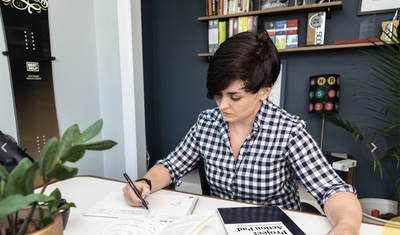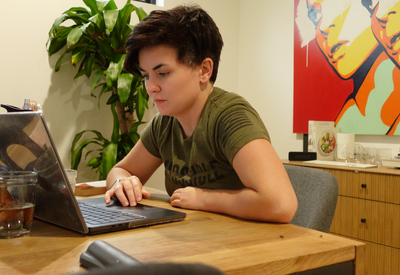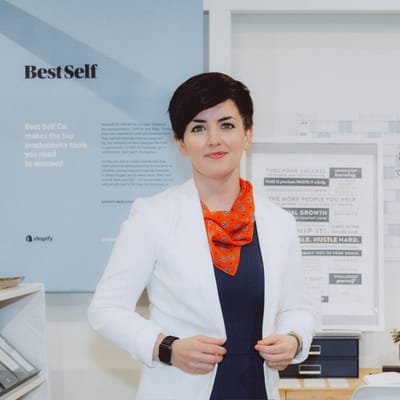
Do you ever struggle with focusing on your big picture plans because you’re caught up in the day-to-day of email, Slack notifications, and constant daily distractions?
Today I’m going to be sharing how I crafted my environment to save me from myself so I could get into Deep Work mode.
The 3 things you’ll learn in this post or video:
✅ What is Deep Work and why is it important?
✅ Understanding your Core Value and the actions or tasks associated
✅ The Action Steps you can take to make Deep Work a Habit
What is “Deep Work”?
One of the most important books I ever read was Deep Work, highly recommend it to everyone — check out my book notes here.
Deep work is the ability to focus without distraction on a cognitively demanding task. It is a skill that allows you to master difficult things at speed and get better at what you do.
Trends in offices today with open plan designs, constant email threads, and meetings often decrease the ability for you to get into deep work.
Back in my architecture days, I worked in an open-plan office where there was always a phone ringing, you were expected to be responsive to your email and you weren’t allowed to listen to your music.
For me, this was a nightmare when it came to getting deep work done as I find myself easily distracted in such environments.
These constant distractions, as well as your phone and social media, are destroyers of depth.
Quality of work = (Time Spent) x (Intensity of Focus)
If you’re trying to learn a complex new skill with your Facebook feed open, you’re firing too many circuits simultaneously and haphazardly to isolate the group of neurons you want to strengthen.
With so much knowledge at our fingertips and our access to technology, those who win are those who can maintain focus and the ability to get into Deep Work.
If you’re committed to deep work, now’s the time to figure out how to implement your philosophy to get it done.
There are a few different modes of deep work:
Monastic: Isolating yourself for large blocks of uninterrupted time on the scale of weeks or even months.
Bimodal: Splitting your weeks and months into the deep and shallow
Rhythmic: Splitting your time into the deep and shallow on a day-by-day basis
For this example, I’m going to talk about rhythmic deep work, wherein I time-block my days between deep and shallow work.
1. Understand your core value
This is not a motivational message; what I mean by understanding your value is a true understanding of what your most important skill is.
What are you being paid to do?
For example:
- Copywriter ➡️Writing compelling copy
- UX Designer ➡️Designing amazing user experiences
- Quarterback ➡️Throwing a ball
- Marketing ➡️Getting more customers
- Carpenter ➡️Carve & make things out of wood
You get the picture.
While these jobs also have other responsibilities and tasks that go alongside it like checking email or Slack notifications; the core value you should be giving, in the end, is clear.
So now, what is YOUR value?
What task or action do you do that drives the most value?
For myself, I realize I have two roles, and they are almost opposite as far as where the value is.
I work as a CEO for BestSelf Co a growing 8-figure revenue business and also work with the product team on new ideas, products, and creative marketing ideas. Not to mention creating content for this blog and my YouTube channel.
2. Designing your Environment for Deep Work
J.K. Rowling struggled with focusing on writing the final Harry Potter due to constant distractions at home so she booked herself into a 5-star luxury hotel in her hometown of Edinburgh, Scotland. She knew by shelling out the money and committing herself to a quiet distraction-free zone, she would be more likely to sit down to write – and she did. That one day turned into a six-month stint working from the Balmoral Hotel with a daily commitment to writing the book.
“There came a day where the window cleaner came, the kids were at home, the dogs were barking and I could not work and this light bulb went on over my head and I thought, I can throw money at this problem. I can now solve this problem. I can go to a quiet place so I came to this hotel because it’s a beautiful hotel, […] and I ended up finishing the last of the Harry Potter books in this hotel.” – J.K. Rowling
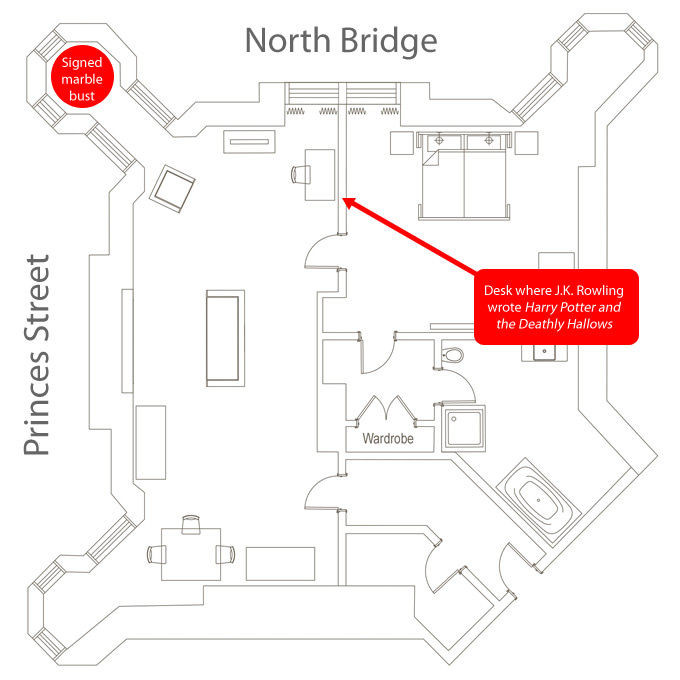
My Environment
Environments have been proven to shape human behavior on both a macro and micro scale. Creativity is a big part of my role, yet my environment didn’t reflect this.
Compare what you’d expect a designer/creator/artist desk to look like compared with the CEO of a company. Completely different!
…Yet I was expecting to complete both jobs in the same environment.
When I moved to Austin I realized that I had felt creatively blocked in New York and that was because I had not set aside a space to give myself creative freedom nor a place to get into deep work.
My desk had become a place where email, slack notifications, and the day-to-day would keep me constantly busy but not productive on my big vision ideas.
While I could give myself time in the morning to get into deep work before I turned my computer on, I wondered, what if I had a completely different space for deep work instead? Somewhere where there was no confusion about why I was there, I didn’t need to readjust each time I sat down.
What if I had 2 desks? One for creativity and another for everything else.

My rule book:
My creative desk was for brainstorming, writing, sketching writing, and getting into deep work. I wouldn’t do calls or meetings from there, even if I wanted to, it would just be a space for me and do deep work.
- Every weekday I spend the first 2-3 hours of my day at my creative desk when my energy tank is feeling full and before my meetings or calls start.
- No calls or meetings
- No phone/texting / social media/slack
- The only technology allowed was my iPad Pro which is where I like to write as it provides less distraction than my laptop
You would be amazed at how much more free the mind becomes when you take screens away and give yourself some space. Since I did this one thing I have been more creative in the two months since I moved here than I have in the previous 10 months in New York — and it’s been much more enjoyable also.
So I did it. This is what my creative zone looks like:
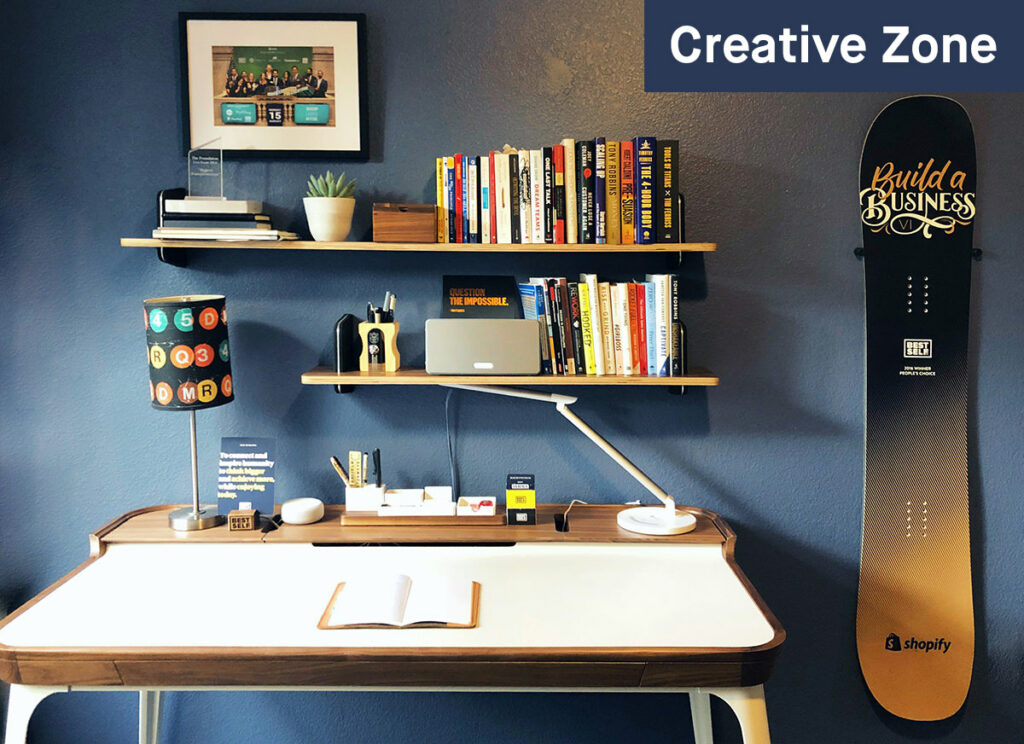
This is what my day-to-day meeting/CEO zone looks like:
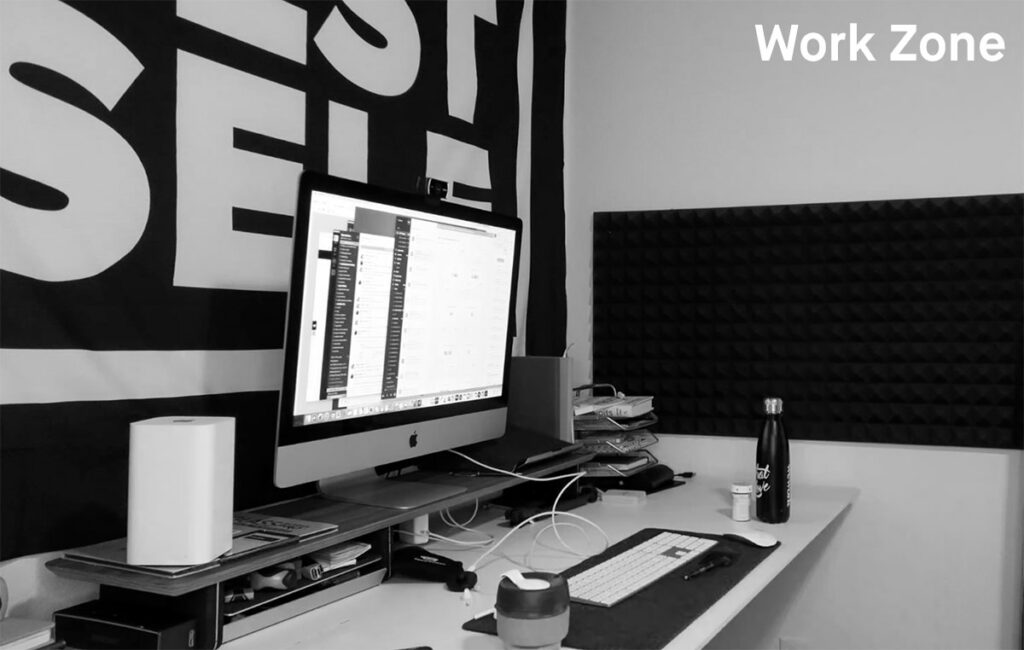
What skill is most valuable to you and can you create or carve a space somewhere so you can work solely on it?
I understand that not all of us can have 2 desks in our home.
In fact, this space doesn’t even have to be in your home, it’s just making the conscious decision to craft somewhere that makes you go into whatever mode you need.
My friend Frank does this with coffee shops, he lists his most important tasks for the day and then he executes for 2-3 hours. When he walks through those doors and gets his coffee he knows what he’s there for and is much less likely to procrastinate.
J.K. Rowling struggled with writing the final Harry Potter book so she booked herself into an expensive hotel in her hometown.
She knew by shelling out the money and committing herself to she would be more likely to sit down to write — and she did. That one day turned into a few weeks at the same hotel with a daily commitment to writing the book.
If you create a habit of doing a certain type of skill or task in a certain place, your brain will automatically start conditioning itself to work faster and better as you won’t be constantly trying to switch from one task to another.
If you’re creative, how can you have a space that gives you as much headspace to create as possible?
Action Steps:
- Write down your core value and the tasks/actions associated with this
- What are the secondary tasks (for example email, slack, etc)
- How can you create a deep work zone so you’re focused on the important core value tasks?
- Craft out time and space for your core value and ensure your environment supports the task rather than being friction.
Become a subscriber receive the latest updates in your inbox.


